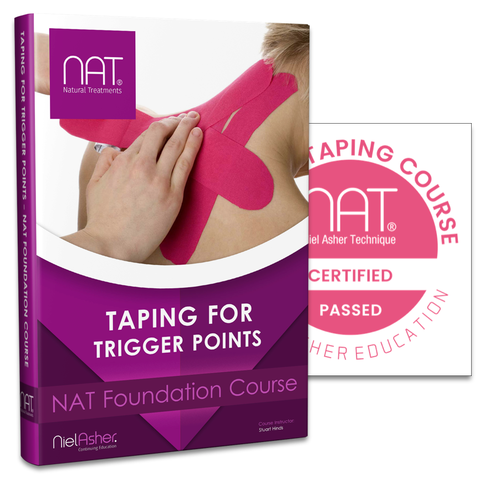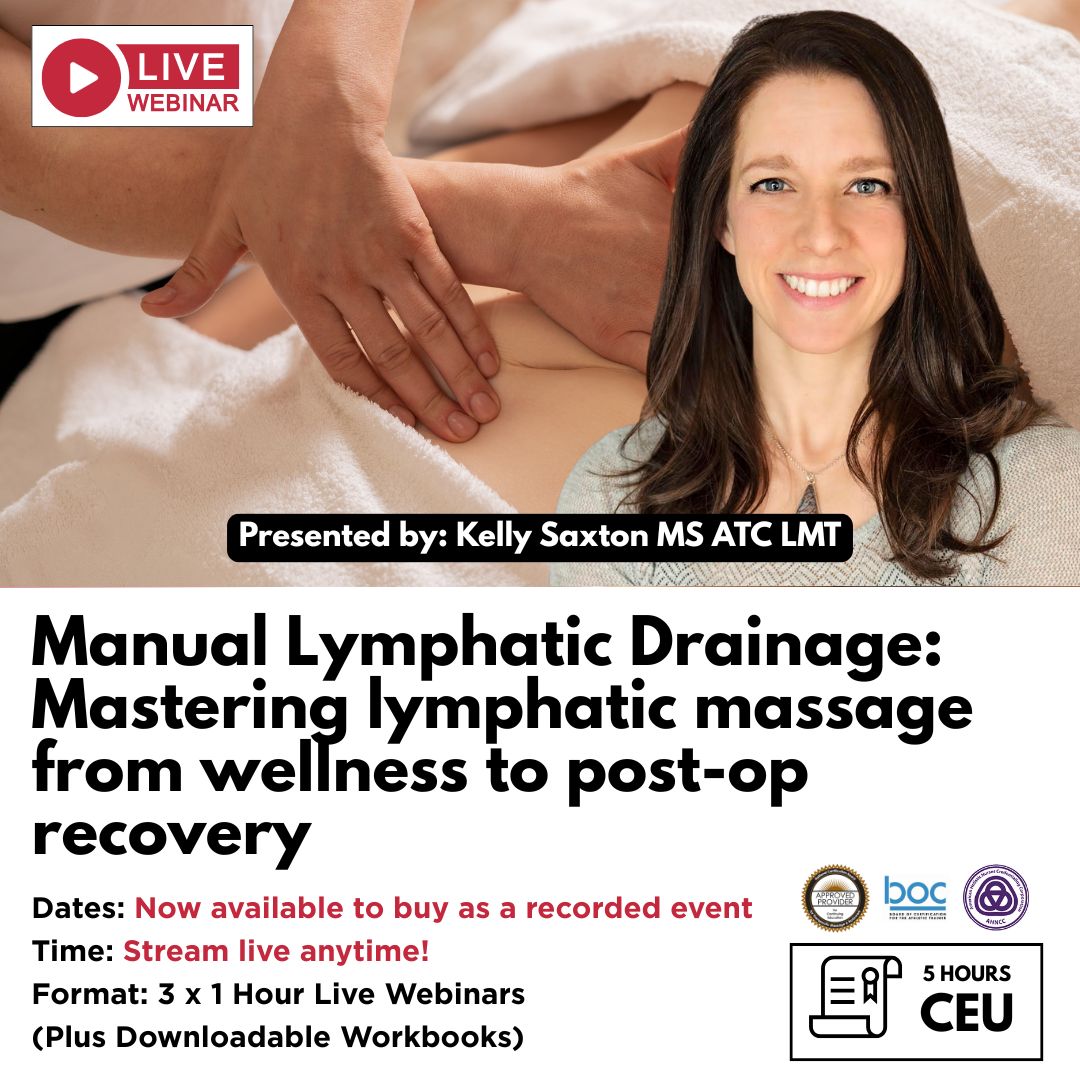Trigger Point Therapy - Taping for Elbow Injuries
Taping for Lateral Elbow Injuries - Stuart Hinds
Taping techniques are increasingly performed after trigger point therapy sessions to help “unload” the treated muscle
The use of taping has become increasingly common as an adjunct to manual therapy, and trigger point therapy offers a number of excellent opportunities to exploit the benefits of taping.
Like so many manual therapy techniques, there is simply too little research to make a strong case one way or another for the benefits of taping.
However, most therapists who use taping will tell you that it is often extremely effective as a method of providing support to weakened muscles whilst providing full range of motion for the client.
The Journal of Sports Medicine (Feb 2013) reviewed the evidence from 10 research papers about the effectiveness of kinesio tape in preventing sports injuries:
-
No clinically important results were found to support the tape’s use for pain relief.
-
There were inconsistent range-of-motion results.
-
Seven outcomes relating to strength were beneficial.
-
The tape had some substantial effects on muscle activity, but it was not clear whether these changes were beneficial or harmful.
-
The review concluded that there was little quality evidence to support the use of kinesio tape over other types of elastic taping to manage or prevent sports injuries.
In summary, taping where it is used by therapists to provide support and off-loading for weakened muscles (usually between treatments) is generally useful and effective.
It is unlikely however to provide any form of therapy in itself. We should add here that there is some evidence to support the use of tape in aiding the reduction of pain (Thelen et al. 2008).
We should also add that the anecdotal evidence for taping is overwhelming, most especially amongst therapists who work in sports and athletics.
Stuart is a lecturer at Victoria University, Melbourne, where he teaches Soft Tissue Techniques.
Stuart works primarily with elite athletes and has been part of the Australian Olympic manual therapy team for over 20 years (Sydney 2000, Athens 2004, Beijing 2008, London 2012).
In 2016, Stuart received a lifetime achievement award from the Australian Association of Massage Therapy.
About Niel Asher Education
Niel Asher Education (NAT Global Campus) is a globally recognised provider of high-quality professional learning for hands-on health and movement practitioners. Through an extensive catalogue of expert-led online courses, NAT delivers continuing education for massage therapists, supporting both newly qualified and highly experienced professionals with practical, clinically relevant training designed for real-world practice.
Beyond massage therapy, Niel Asher Education offers comprehensive continuing education for physical therapists, continuing education for athletic trainers, continuing education for chiropractors, and continuing education for rehabilitation professionals working across a wide range of clinical, sports, and wellness environments. Courses span manual therapy, movement, rehabilitation, pain management, integrative therapies, and practitioner self-care, with content presented by respected educators and clinicians from around the world.
Known for its high production values and practitioner-focused approach, Niel Asher Education emphasises clarity, practical application, and professional integrity. Its online learning model allows practitioners to study at their own pace while earning recognised certificates and maintaining ongoing professional development requirements, making continuing education accessible regardless of location or schedule.
Through partnerships with leading educational platforms and organisations worldwide, Niel Asher Education continues to expand access to trusted, high-quality continuing education for massage therapists, continuing education for physical therapists, continuing education for athletic trainers, continuing education for chiropractors, and continuing education for rehabilitation professionals, supporting lifelong learning and professional excellence across the global therapy community.

Continuing Professional Education
Looking for Massage Therapy CEUs, PT and ATC continuing education, chiropractic CE, or advanced manual therapy training? Explore our evidence-based online courses designed for hands-on professionals.




















